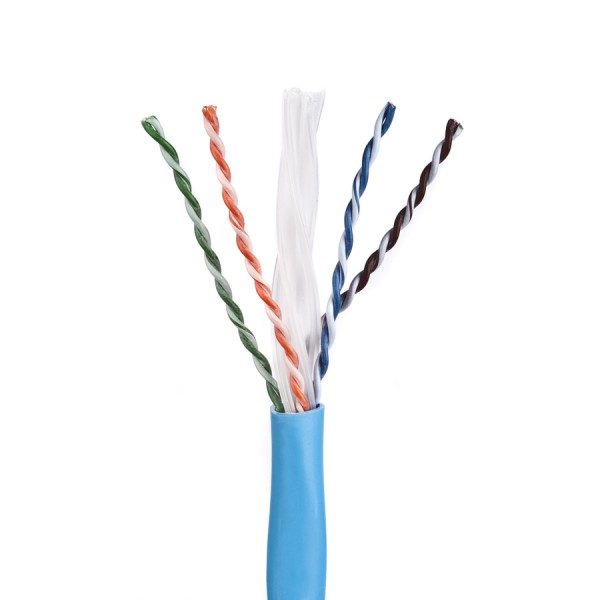Cat6 cables are a staple in modern networking, providing reliable and high-speed data transmission. Understanding the role of each pair of wires within a Cat6 cable is essential for network engineers, IT professionals, and anyone interested in setting up or maintaining a robust network infrastructure. This article delves into the detailed functions of each pair of wires in a Cat6 cable and explains their significance in data transmission.
Structure of a Cat6 Cable
A standard Cat6 cable consists of four twisted pairs of wires, making a total of eight wires. These pairs are color-coded for easy identification:
- Pair 1: White/Orange and Orange
- Pair 2: White/Green and Green
- Pair 3: White/Blue and Blue
- Pair 4: White/Brown and Brown
Each pair plays a specific role in data transmission and power delivery, particularly in Ethernet and Power over Ethernet (PoE) applications.
Here’s a table summarizing the functions of each pair of wires in a Cat6 network cabling:
| Pair Number | Wire Colors | Pin Numbers | Function | Role in Ethernet | Role in PoE |
|---|---|---|---|---|---|
| Pair 1 | White/Orange and Orange | Pins 1 and 2 | Transmitting Data (Tx) | Sends data from the device to the network | Not typically used for PoE |
| Pair 2 | White/Green and Green | Pins 3 and 6 | Receiving Data (Rx) | Receives data from the network to the device | Not typically used for PoE |
| Pair 3 | White/Blue and Blue | Pins 4 and 5 | Additional Data Transmission and PoE | Part of bidirectional data in Gigabit Ethernet | Carries power for PoE applications |
| Pair 4 | White/Brown and Brown | Pins 7 and 8 | Additional Data Transmission and PoE | Part of bidirectional data in Gigabit Ethernet | Carries power for PoE applications |
The above table provides a clear and concise overview of the specific functions and roles of each pair of wires in a Cat6 network cable.
Functions of Each Pair
Pair 1: White/Orange and Orange (Pins 1 and 2)
- Function: Transmitting Data (Tx)
- Role in Ethernet: This pair is used primarily for sending data from the device (such as a computer or router) to the network. In traditional 10BASE-T and 100BASE-TX Ethernet standards, this pair is dedicated to transmitting data signals.
Pair 2: White/Green and Green (Pins 3 and 6)
- Function: Receiving Data (Rx)
- Role in Ethernet: This pair is used for receiving data from the network to the device. In 10BASE-T and 100BASE-TX Ethernet standards, this pair is responsible for receiving incoming data signals.
Pair 3: White/Blue and Blue (Pins 4 and 5)
- Function: Additional Data Transmission and PoE
- Role in Gigabit Ethernet: In 1000BASE-T (Gigabit Ethernet), this pair is used as part of the bidirectional data transmission. Gigabit Ethernet requires all four pairs to transmit data simultaneously, enhancing the network speed to 1 Gbps.
- Role in PoE: This pair can also carry power in PoE applications, allowing devices like IP cameras, VoIP phones, and wireless access points to receive power through the Ethernet cable, eliminating the need for separate power supplies.
Pair 4: White/Brown and Brown (Pins 7 and 8)
- Function: Additional Data Transmission and PoE
- Role in Gigabit Ethernet: Similar to Pair 3, this pair is used for bidirectional data transmission in Gigabit Ethernet, contributing to the increased data transfer rate.
- Role in PoE: This pair also supports PoE, providing a power source for various network devices over the Ethernet cable.
Advanced Networking: Utilizing All Pairs
In modern Ethernet standards, particularly 1000BASE-T (Gigabit Ethernet), all four pairs are utilized for data transmission. This approach is known as “full-duplex” communication, where data is sent and received simultaneously across all pairs. This method significantly increases the network’s bandwidth and efficiency, allowing for faster and more reliable data transfer.
Power over Ethernet (PoE)
Power over Ethernet (PoE) technology allows network cables to carry electrical power, providing a convenient solution for powering devices like IP cameras, wireless access points, and VoIP phones. PoE standards (such as IEEE 802.3af and 802.3at) specify how power is delivered over the Ethernet cables, using pairs 3 and 4 for this purpose. This capability simplifies installations and reduces the need for additional power infrastructure.
Understanding the function of each pair of wires in a Cat6 cabling is crucial for designing and maintaining efficient and high-speed networks. By leveraging all four pairs for data transmission and power delivery, modern Ethernet standards can achieve faster speeds and more versatile network setups. Whether you’re setting up a small office network or a large-scale enterprise system, knowing the roles of each wire pair will help you optimize performance and ensure reliable connectivity.
By mastering the intricacies of Cat6 cables, network professionals can create robust and scalable network infrastructures capable of meeting the demands of today’s digital world.



